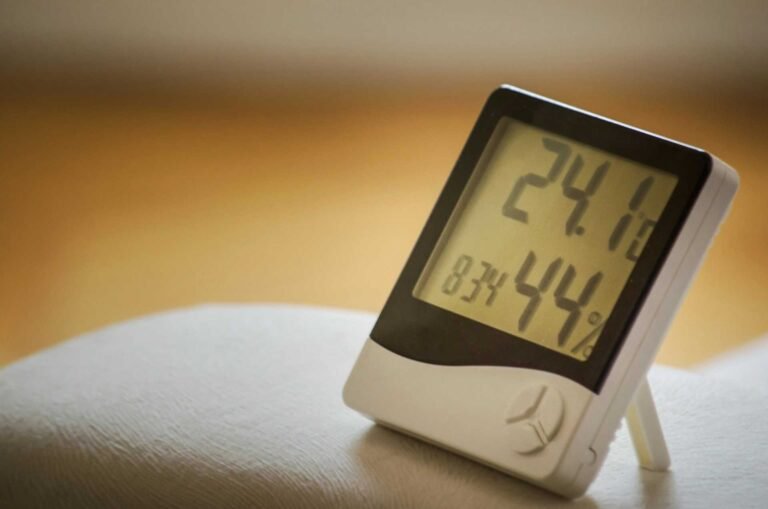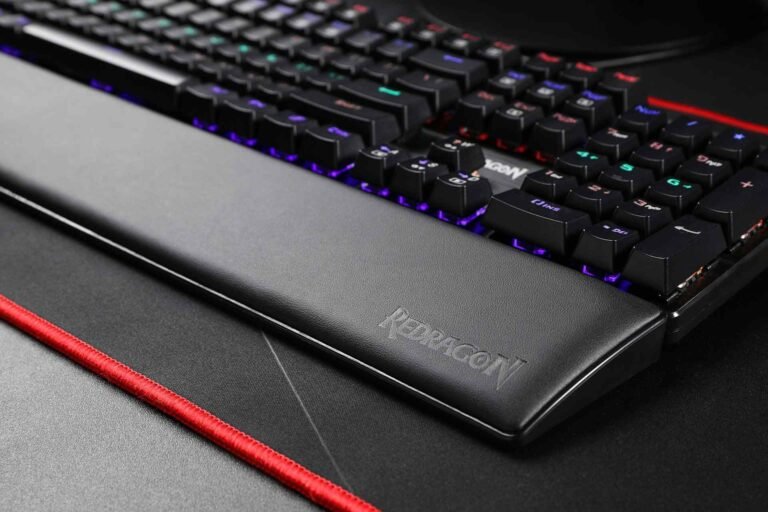Should You Use a Footrest at Your Desk? A Guide to Better Posture and Comfort
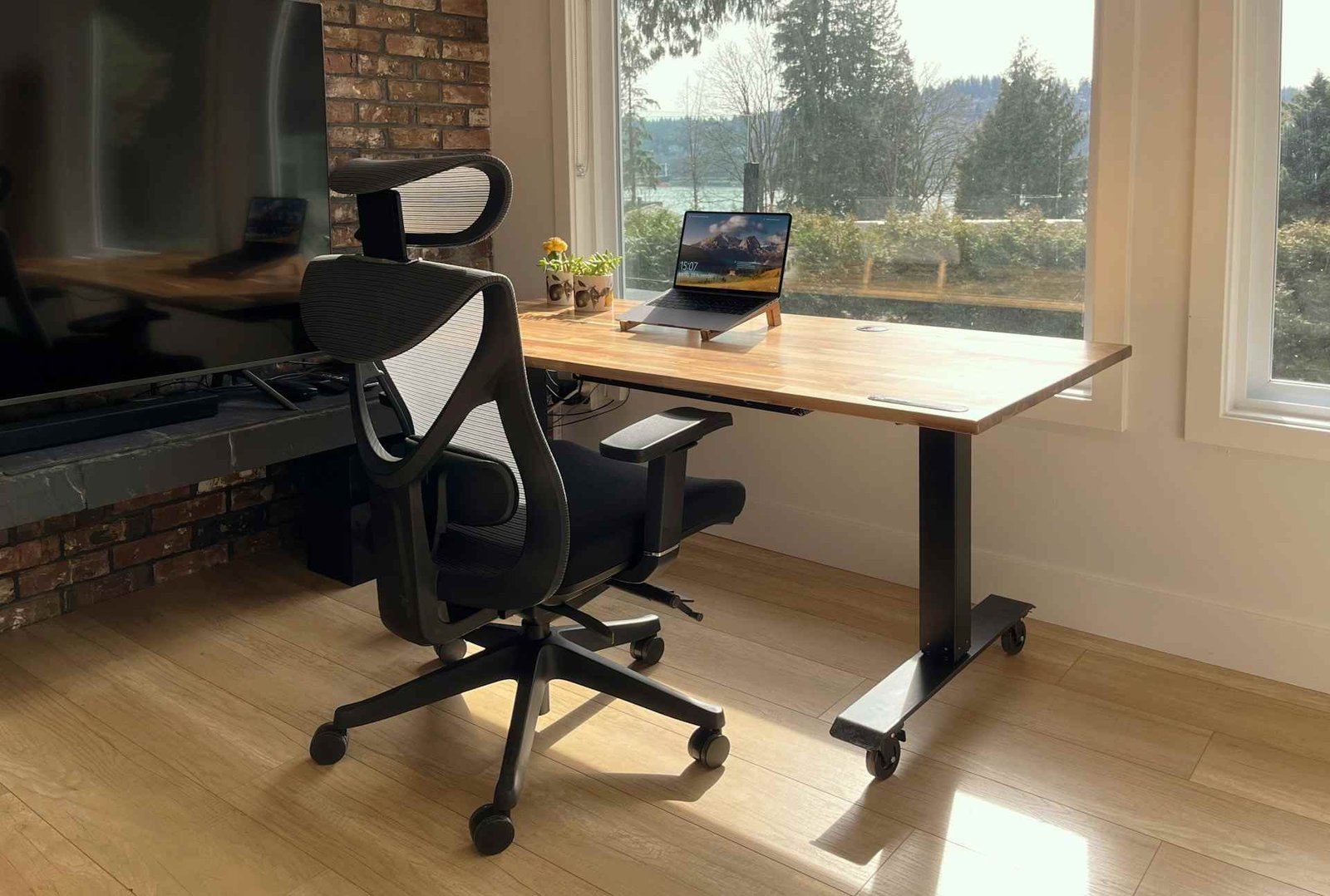
Ever found yourself dangling your feet mid-air while working, feeling like a kid at the grown-ups’ table? That awkward moment when your legs are too short for your desk setup, or when you realize you’ve been unconsciously tucking one foot under the other for the past three hours. The question “should you use a footrest at your desk” has probably crossed your mind more than once, especially during those marathon work sessions when your lower back starts sending distress signals.
The short answer is yes, most people can benefit from using a footrest at their desk. But like most things in the ergonomic world, it’s not quite that simple. Whether you actually need one depends on your height, desk setup, chair configuration, and how your body responds to long periods of sitting. Let’s dive into everything you need to know about footrests and why they might just be the missing piece in your workspace puzzle.
What Exactly Does a Footrest Do?
Think of a footrest as your legs’ best friend during the workday. When you’re sitting at your desk, proper foot positioning plays a crucial role in maintaining good posture throughout your entire body. It’s like a domino effect, when your feet aren’t properly supported, it affects your ankles, which influences your knees, which impacts your hips, and eventually reaches all the way up to your spine.
A footrest essentially creates a platform that allows you to maintain the ideal sitting position: feet flat, knees at roughly a 90-degree angle, and thighs parallel to the floor. When your regular desk and chair setup can’t achieve this naturally, a footrest bridges that gap. It’s particularly helpful for shorter individuals who find their feet don’t comfortably reach the floor, or for anyone whose desk height forces them into less-than-ideal positioning.
When Should You Use a Footrest?
The decision of when should you use a footrest isn’t always obvious. Here are some telltale signs that you might benefit from one:
Your feet don’t touch the floor comfortably when sitting in your chair at the proper desk height. This is probably the most common scenario. If you have to point your toes downward or dangle your feet, you’re a prime candidate for footrest support.
You frequently experience lower back discomfort during or after work sessions. Poor foot positioning can create a chain reaction of tension that travels up your spine. When your feet aren’t properly supported, you might unconsciously shift your pelvis or arch your back to compensate.
You find yourself constantly readjusting your sitting position or crossing and uncrossing your legs throughout the day. This restless leg syndrome at your desk often indicates that your current setup isn’t providing adequate support for comfortable, sustained sitting.
Your legs feel tired, heavy, or experience reduced circulation during long work periods. Proper foot positioning helps promote healthy blood flow throughout your lower extremities.
You notice yourself slouching more than usual or struggling to maintain good posture despite your best intentions. Sometimes the foundation, literally where your feet rest, is what determines how well you can maintain proper alignment everywhere else.
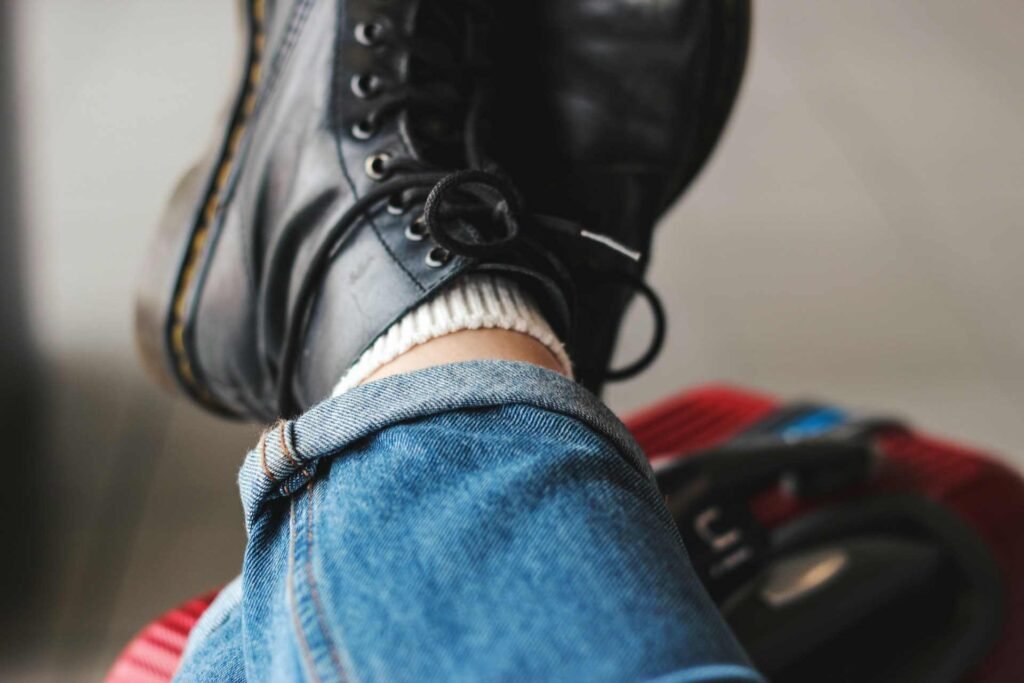
Types of Footrests and What to Look For
Not all footrests are created equal, and the best choice for you depends on your specific needs, preferences, and workspace setup. Here’s a breakdown of the main types and what makes each one special:
Memory Foam Footrests
These are probably the most popular option, and for good reason. Memory foam cushions provide excellent comfort and conform to the shape of your feet and legs. They’re typically adjustable in height and offer a plush, comfortable surface that many people find immediately appealing.
The ComfiLife Foot Rest represents this category well, with high-density memory foam that provides both comfort and support. These footrests are particularly good for people who prioritize comfort and prefer a softer surface for their feet. They’re also versatile, many can be flipped over for a rocking motion or used in other positions for different types of support.
Rocking and Tilting Footrests
These footrests encourage gentle movement while you work, which can help improve circulation and prevent stiffness. The StrongTek Ergonomic Wood Foot Rest and Humanscale FM 300 are excellent examples of this style, offering smooth rocking motion that engages your leg muscles subtly throughout the day.
The rocking motion isn’t just about comfort, it actually helps keep your muscles active and your blood flowing. This can be particularly beneficial for people who tend to sit very still for long periods or who experience circulation issues.
Heated and Massage Footrests
For those who want extra comfort features, heated footrests with massage functions like the Snailax Heated Foot Rest take foot support to the next level. These combine ergonomic support with therapeutic features like heat therapy and vibration massage.
While these features aren’t necessary for everyone, they can be particularly beneficial for people with circulation issues, those who work in cold environments, or anyone who experiences chronic foot or leg discomfort. The heat helps improve blood flow, while gentle massage can help prevent stiffness and fatigue.
Adjustable Platform Footrests
These footrests, like the Eureka Ergonomic Tilt Adjustable Footrest and Scalebeard Foot Rest, focus on providing a stable platform with multiple adjustment options. They typically offer height adjustment, tilt adjustment, and sometimes even angle customization.
These are ideal for people who share their workspace with others, have varying tasks that might require different positioning, or who like to fine-tune their setup for optimal comfort. The textured surfaces often provide subtle massage benefits while maintaining stability.
How to Choose the Right Footrest for Your Setup
Selecting the right footrest involves considering several factors beyond just picking the most comfortable-looking option. Here’s what you should think about:
Your Height and Desk Setup
Measure the distance between your feet and the floor when you’re sitting at your desk in proper position. This will help you determine how much elevation you need. If you’re on the shorter side, you’ll likely need more height adjustment than someone who is taller.
Also consider your desk height and chair configuration. Some people find that adjusting their chair height solves their foot support issues, while others discover that doing so creates problems with their arm and wrist positioning relative to their keyboard and mouse.
Your Work Style and Movement Preferences
Think about how you like to sit and move while working. If you’re someone who tends to stay in one position for long periods, a rocking footrest might encourage beneficial movement. If you prefer stability and don’t like things that move, a fixed platform might be better.
Consider whether you’ll be taking your footrest with you between different locations. Some people need something portable for hybrid work situations, while others want something substantial that stays put.
Your Specific Comfort Needs
Do you tend to get cold feet? A heated option might be worth considering. Do you experience a lot of leg tension? Look for options with massage features or textured surfaces. Are you dealing with specific health issues like diabetes or circulation problems? Discuss your needs with a healthcare provider who can offer personalized advice.
Is a Foot Rest Good for Posture?
Absolutely, and here’s why this matters more than you might think. Good posture isn’t just about looking professional or avoiding your grandmother’s nagging voice in your head. It’s about creating the optimal conditions for your body to function efficiently during those long work sessions.
When we ask “is a foot rest good for posture,” we’re really asking whether proper foot support can influence the alignment of your entire musculoskeletal system. The answer is a resounding yes. Your feet serve as the foundation of your seated posture, much like the foundation of a building determines how stable everything above it will be.
Proper foot positioning helps maintain the natural curves of your spine. When your feet are well-supported, it’s easier to keep your pelvis in a neutral position, which allows your lower back to maintain its natural lordotic curve. This, in turn, makes it easier to keep your shoulders back and your head in proper alignment.

Without adequate foot support, you might find yourself compensating in various ways. Some people slide forward in their chair to reach the floor, creating a slouched position. Others might tuck their feet under their chair, which can restrict blood flow and create muscle tension. Still others cross their legs, which can lead to uneven hip positioning and eventual discomfort.
A footrest also allows you to take advantage of ergonomic accessories that work together to create a more comfortable workspace. Just as proper wrist positioning is crucial for preventing strain, proper foot positioning forms the foundation of good ergonomic practice.
The Health Benefits You Can Expect
Using a footrest isn’t just about comfort, though that’s certainly a nice bonus. The health benefits extend throughout your body and can have a significant impact on how you feel during and after your workday.
Improved Circulation
One of the most immediate benefits people notice is better blood circulation in their legs and feet. When your feet are dangling or positioned awkwardly, it can compress blood vessels and reduce circulation. This often manifests as that pins-and-needles sensation, cold feet, or general leg heaviness that many desk workers experience.
A footrest helps maintain proper leg positioning that promotes healthy blood flow. This is particularly important if you’re someone who tends to sit for extended periods without getting up to move around. Better circulation means more oxygen and nutrients reaching your tissues, and more efficient removal of waste products that can cause fatigue and discomfort.
Reduced Lower Back Strain
Your lower back bears the brunt of poor sitting posture, and proper foot positioning plays a bigger role in back health than most people realize. When your feet aren’t properly supported, it affects your pelvic alignment, which directly impacts your spine.
A footrest helps maintain the natural curve of your lower back by supporting proper pelvic positioning. This can significantly reduce the strain on your lumbar spine and the surrounding muscles that work overtime to compensate for poor positioning. Many people notice a reduction in that end-of-day lower back ache once they start using a footrest consistently.
Decreased Leg Fatigue
Sitting might seem like a passive activity, but your leg muscles are actually working to maintain your position throughout the day. When your feet aren’t properly supported, these muscles have to work harder, leading to fatigue and discomfort.
With proper foot support, your leg muscles can relax more effectively, reducing overall fatigue. This is especially noticeable during long meetings, extended writing sessions, or those marathon coding days when you barely move from your desk.
Enhanced Focus and Productivity
Here’s something that might surprise you: physical comfort directly impacts cognitive performance. When you’re not constantly shifting in your chair, adjusting your position, or dealing with nagging discomfort, you can dedicate more mental energy to your actual work.
The subtle but persistent discomfort of poor positioning can be surprisingly draining on your mental resources. By addressing these comfort issues with proper ergonomic support, including a footrest, you free up mental bandwidth for the tasks that actually matter.
Setting Up Your Footrest for Maximum Benefit
Getting a footrest is only half the battle, setting it up correctly is what actually delivers the benefits. Here’s how to optimize your footrest position:
Height Adjustment
Your footrest should be positioned so that your thighs are parallel to the floor and your knees are at approximately a 90-degree angle. Your feet should rest comfortably on the footrest without having to point your toes downward or flex them upward.
Start with your footrest at its lowest setting and gradually adjust upward until you find the sweet spot. It’s better to err on the side of slightly too low rather than too high, you can always add height, but being forced into an overly elevated position can create new problems.
Distance and Angle
Position your footrest so your legs can rest naturally without having to stretch forward or pull back uncomfortably. You should be able to slide your feet onto the footrest easily while maintaining good contact with your chair’s backrest.
If your footrest offers tilt adjustment, experiment with different angles to find what feels most comfortable. A slight upward angle can help reduce pressure on the backs of your thighs, while a flat position might feel more stable for some people.
Integration with Your Overall Setup
Your footrest should work harmoniously with the rest of your ergonomic setup. This means considering how it affects your relationship to your keyboard, mouse, monitor, and any other productivity tools you use regularly.
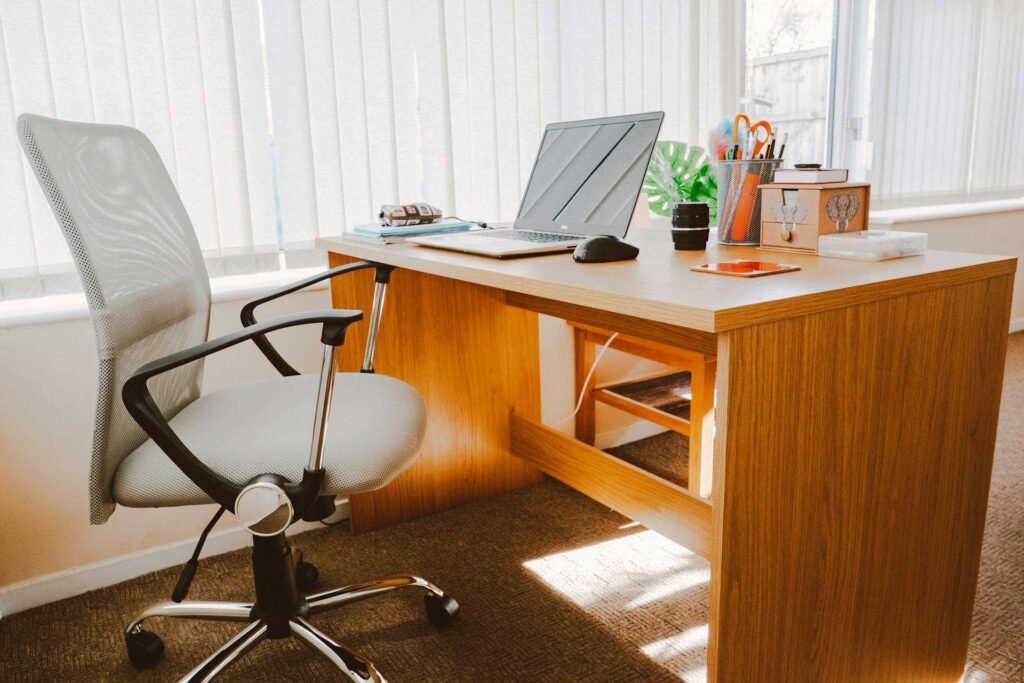
Common Footrest Mistakes to Avoid
Even with the best intentions, it’s easy to make mistakes when incorporating a footrest into your workspace. Here are some pitfalls to watch out for:
Using It as a Storage Spot
That footrest quickly becomes a convenient place to store your bag, extra papers, or that random cable you’re not sure what to do with. While it might seem harmless, using your footrest for storage defeats the purpose and can actually create new problems.
When your footrest is occupied by stuff, you’re back to the original problem of poor foot positioning. Plus, you might find yourself compensating by stretching your legs around the obstruction, creating awkward positioning that can lead to discomfort.
Setting It Too High
Enthusiasm for your new ergonomic setup can sometimes lead to overcorrection. Setting your footrest too high can force your knees above hip level, which can restrict circulation and create pressure on the backs of your thighs.
If you find yourself frequently sliding forward in your chair or experiencing numbness in your legs, your footrest might be positioned too high. The goal is support, not elevation for its own sake.
Ignoring the Rest of Your Setup
A footrest isn’t a magic bullet that will solve all your ergonomic woes if the rest of your setup is problematic. It works best as part of a comprehensive approach to workspace ergonomics that includes proper chair adjustment, monitor positioning, and keyboard and mouse placement.
Not Giving It Time
Like any change to your workspace, getting used to a footrest takes time. Your body has adapted to your previous sitting pattern, and it needs time to adjust to the new positioning. Don’t give up if it doesn’t feel perfect immediately, give yourself at least a week or two to adapt before making major adjustments.
Footrest Alternatives and Complementary Solutions
While footrests are often the best solution for foot support issues, they’re not the only option. Depending on your specific situation, you might find success with alternative approaches:
Chair Adjustment
Sometimes the solution is simpler than buying new equipment. Lowering your chair height might bring your feet closer to the floor, though you’ll need to ensure this doesn’t create problems with your arm positioning relative to your desk.
Desk Height Adjustment
If you have an adjustable desk, raising it might allow you to also raise your chair, which could improve your foot positioning. This is particularly effective if you’re using a standing desk that can accommodate both sitting and standing positions.
Different Seating Options
Some people find that switching to a kneeling chair, exercise ball, or other alternative seating eliminates their foot support issues entirely. While these aren’t right for everyone, they might be worth considering if traditional chair and footrest combinations aren’t working for you.
Foot Exercises and Movement
Regardless of whether you use a footrest, incorporating regular foot and ankle exercises into your workday can help prevent stiffness and circulation issues. Simple ankle circles, calf raises, and toe flexes can be done right at your desk and complement the benefits of proper foot support.
The Psychology of Comfort
There’s something to be said for the psychological benefits of improved physical comfort. When you’re not constantly aware of minor discomforts or awkward positioning, you can enter a more focused mental state. This is similar to how proper workspace lighting affects mood and productivity, the physical environment directly influences your mental state.

Many people report that adding a footrest to their workspace creates a sense of being “properly set up” that goes beyond the physical benefits. There’s a confidence that comes from knowing you’ve optimized your workspace for comfort and health, and this psychological benefit can be just as valuable as the physical improvements.
Frequently Asked Questions
Do I need a footrest if I have an adjustable chair?
Even with the best adjustable chair, you might still benefit from a footrest, especially if you’re shorter than average or if your desk height limits your chair adjustment options. The key is achieving proper foot positioning while maintaining correct arm and wrist alignment with your keyboard and mouse. Sometimes a footrest is the missing piece that allows everything else to fall into place.
Can using a footrest cause any problems?
When used correctly, footrests rarely cause problems. However, setting it too high can restrict circulation or create pressure points on your thighs. Some people also become too dependent on their footrest and experience discomfort when they have to sit without it. The key is finding the right height and using it as part of a balanced approach to workspace ergonomics.
How long does it take to get used to a footrest?
Most people adapt to using a footrest within a few days to a week. Your muscles and posture habits need time to adjust to the new positioning. During the adjustment period, you might experience some muscle soreness as your body adapts to improved alignment. This is normal and typically resolves as you get used to the better positioning.
Should I use a footrest if I have a standing desk?
If you use your desk in sitting mode, yes, the same principles apply. However, when you’re standing, you might benefit from an anti-fatigue mat instead. Some footrests, like rocking models, can actually be useful while standing to encourage subtle movement and reduce fatigue.
Can children benefit from footrests at their desks?
Absolutely! Children are often the most obvious candidates for footrests since they’re frequently using furniture sized for adults. Proper foot support is especially important for developing good posture habits early. Many of the same principles apply, though you might want to choose a footrest with fun colors or features that appeal to younger users.
Conclusion
So, should you use a footrest at your desk? For a lot of people, the answer is a comfortable yes. Whether you’re dealing with dangling feet, lower back discomfort, or just want to optimize your workspace for better comfort and productivity, a footrest can be a simple but effective solution.
The beauty of footrests lies in their simplicity, they’re not high-tech gadgets or complex systems, just a straightforward tool that addresses a basic ergonomic need. Yet this simple addition to your workspace can have surprisingly far-reaching effects on your comfort, posture, and overall well-being during those long work sessions.
Remember, the best footrest is the one you’ll actually use consistently. Whether that’s a plush memory foam model that feels like a cloud for your feet, a sleek rocking design that keeps you subtly moving throughout the day, or a high-tech heated version that pampers your feet while you work, the right choice is the one that fits your needs, your space, and your budget.
Looking for more? Check out our productivity tools category for more articles and guides that may interest you!
Featured image credit: Photo by EFFYDESK on Unsplash
This content is for informational purposes only. Please verify current information directly on the retailer’s site before purchasing.


